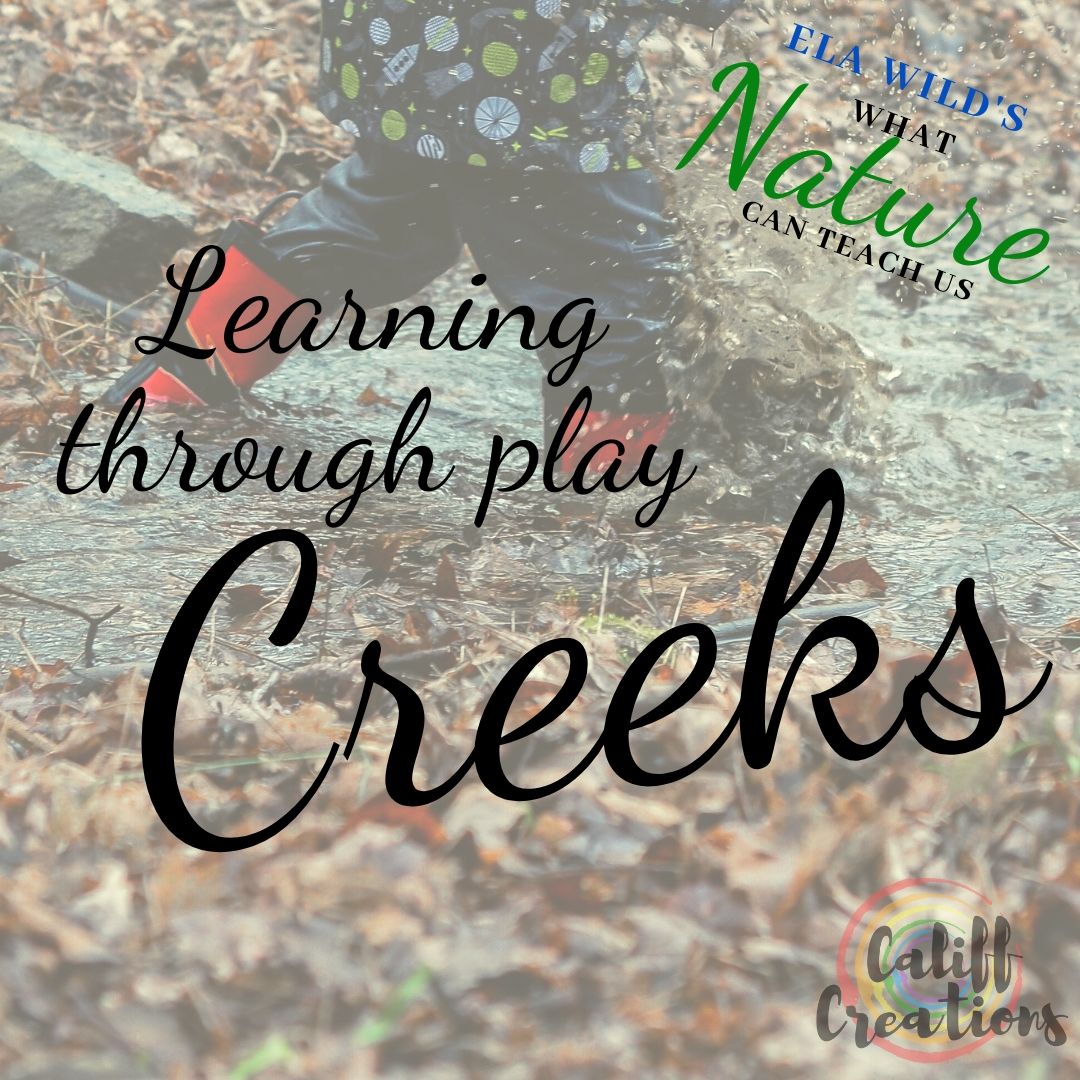
Creek Play: What Nature Can Teach Us
When the weather warms up, kids naturally want to play outside more. This is the perfect time to go exploring and discover new things. Creeks are a great place for kids to play, explore, and learn. Spring is one of my favorite times to go play in a creek since they are bursting with life.

This post includes affiliate links. That means that if you purchase through these links that Califf Creations will receive compensation that is of no extra cost to you. This helps cover the costs of Califf Creations. You can read more on my disclaimer page.
My kids are fascinated with nature because I am fascinated with nature. Even things that may seem mundane to me at this point in my life might be new and exciting for kids. That is why I practice child-led exploration and make sure to get excited about whatever they discover. When I get really into the activity, it acts as the match to spark curiosity and adventure in my kids. So get pumped! Yes, even if you don’t feel it. If you want your kids to have this connection to nature you must demonstrate it yourself.
That being said, I need to give parents a tip. Playing in the creek, kids will get wet and most likely dirty. Be prepared with towels and either wear waterproof clothes or bring a change. Water shoes are also recommended if you don’t know the creek. If you can, going barefoot is the best! It is all part of the learning process and fun!
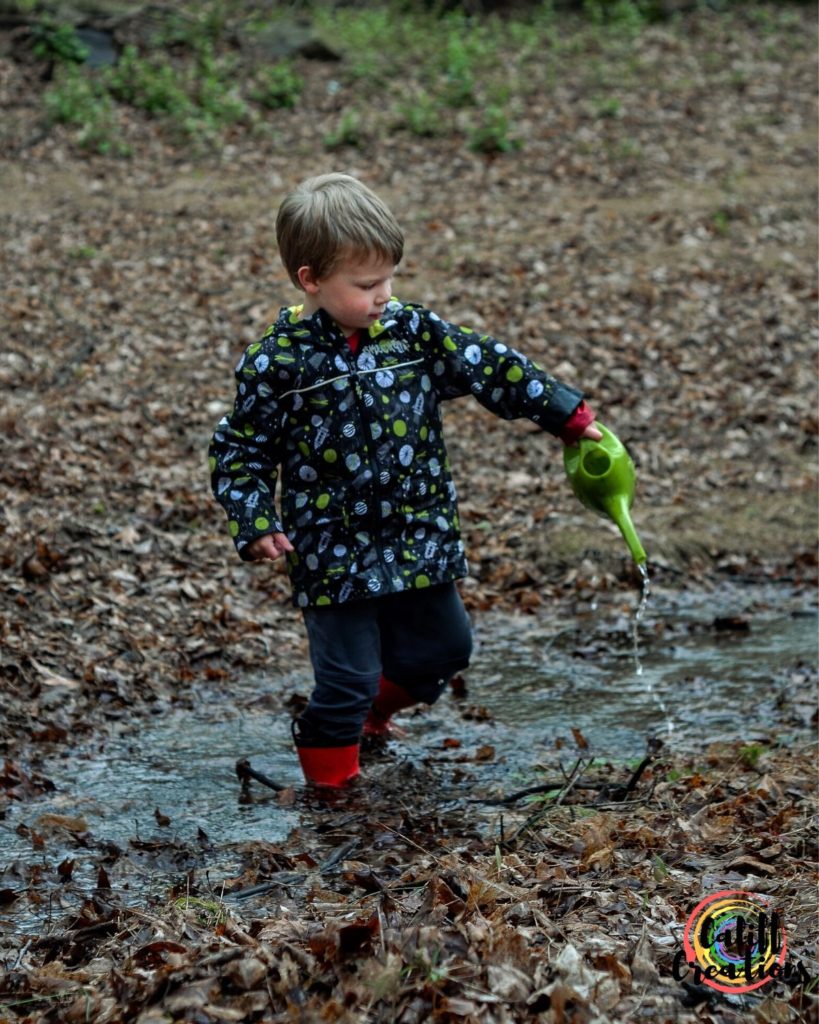
The Importance of Risky Creek Play
Creeks are the perfect place to practice child-led exploration. Let them take the lead and follow their curiosity. The most important thing to remember as a parent is to take a step back. Kids need to take calculated risks and creeks provide plenty of them. Through this kind of trial and error exploration, kids learn more about the world than they ever could from a book. They learn to observe, discover, and amaze their parents daily.
Problem Solving
How do you decide where to cross a creek? Where do you place your feet? Can I figure out a way to reach that rock? These are great opportunities to allow kids to problem solve. Instead of telling children where they should cross a creek, just ask them to try it on their own. Their little brains get turning as they come up with a way to achieve their goal.
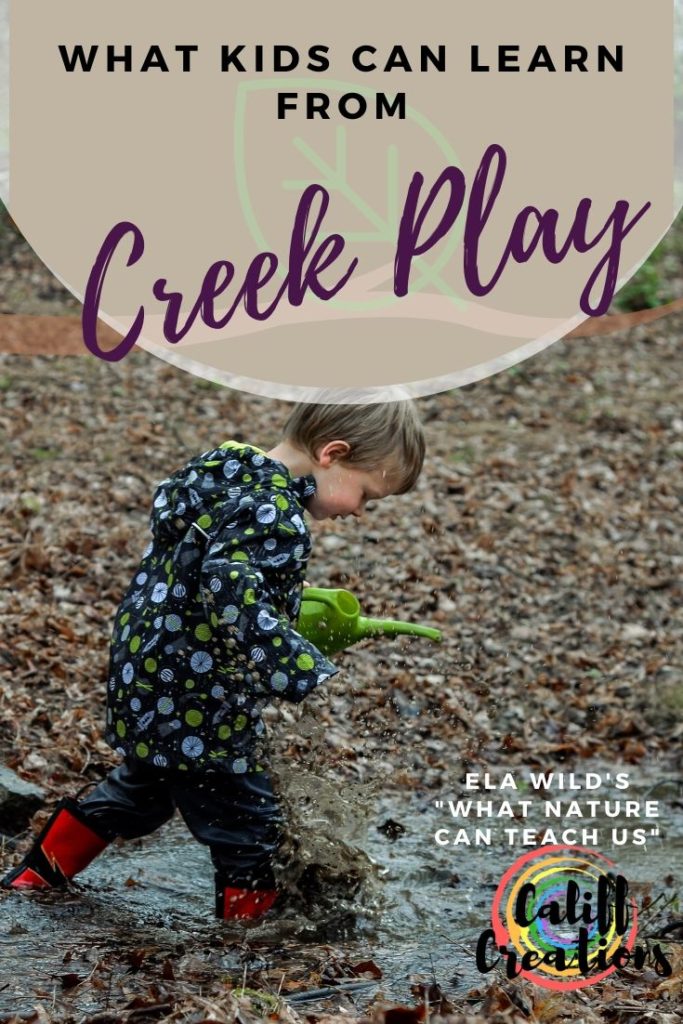
Develops Balance
The uneven footing in a creek is perfect for kids to develop gross motor skills by practicing balance and stability while walking. They learn to look where they are placing their feet and have to use stabilizing muscles to correct themselves if they slip.
When kids play in the creek they also get the added benefits of sensory play. Here are a couple of questions to ask kids while playing in a creek to get them thinking.
- How does a dry rock feel versus a wet rock? What about one that has algae growing on it?
- Are there different areas of the creek that the water feels warmer or colder?
- Can you find something that makes a crunch? (i.e. a dry leaf) slippery? (a wet rock) soft? (like moss)
- Does the water feel different on your fingers than on your toes?
- What sinks and what floats? If you have a watering can you can figure out what you can fill it with to make it sink.
- Does the water move faster in some areas and slower in others?
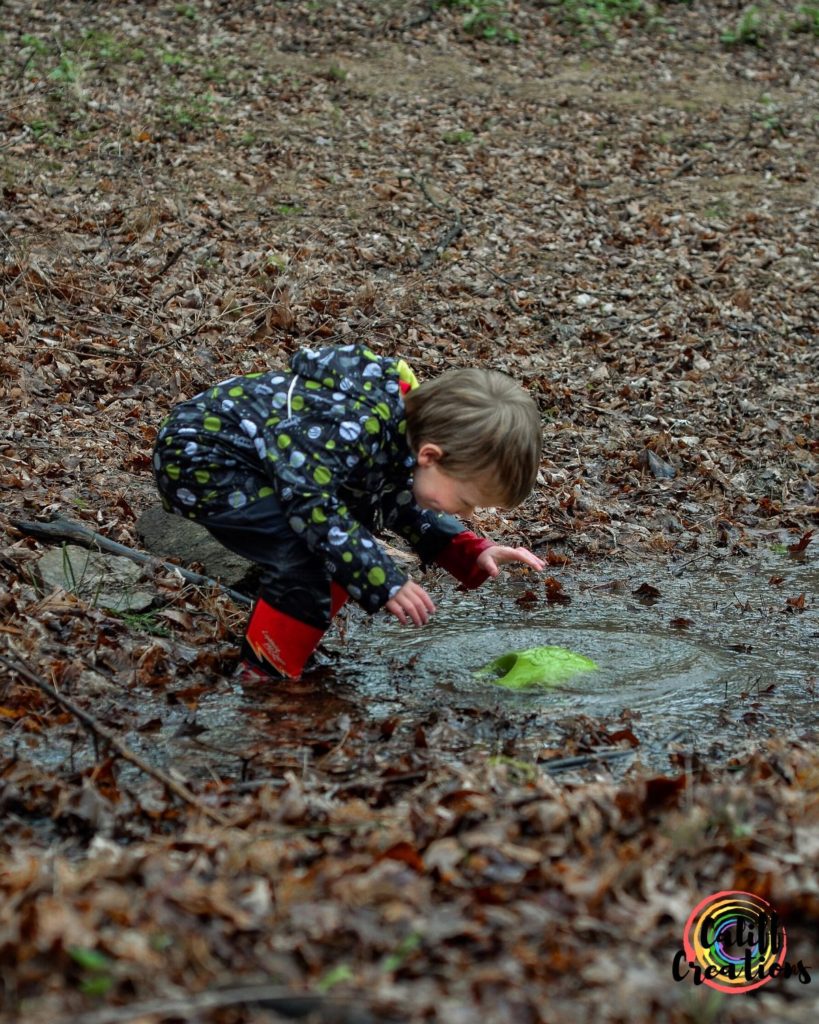
Studying the Creek’s Current with Kids
There are so many ways to learn about the current in the creek. Creeks often have faster moving areas and slower, more protected eddies. These eddies are usually teeming with life but we’ll get to that later. There are a lot of really fun ways to explore and study the motion of water in the creek’s current with kids.
Try taking a something that floats (we used an empty watering can) and placing it at different parts of the creek. Kids will have so much fun figuring out where it moves fast and where it will mostly remain in the same place and it is a great way to introduce the concept of currents to little kids.
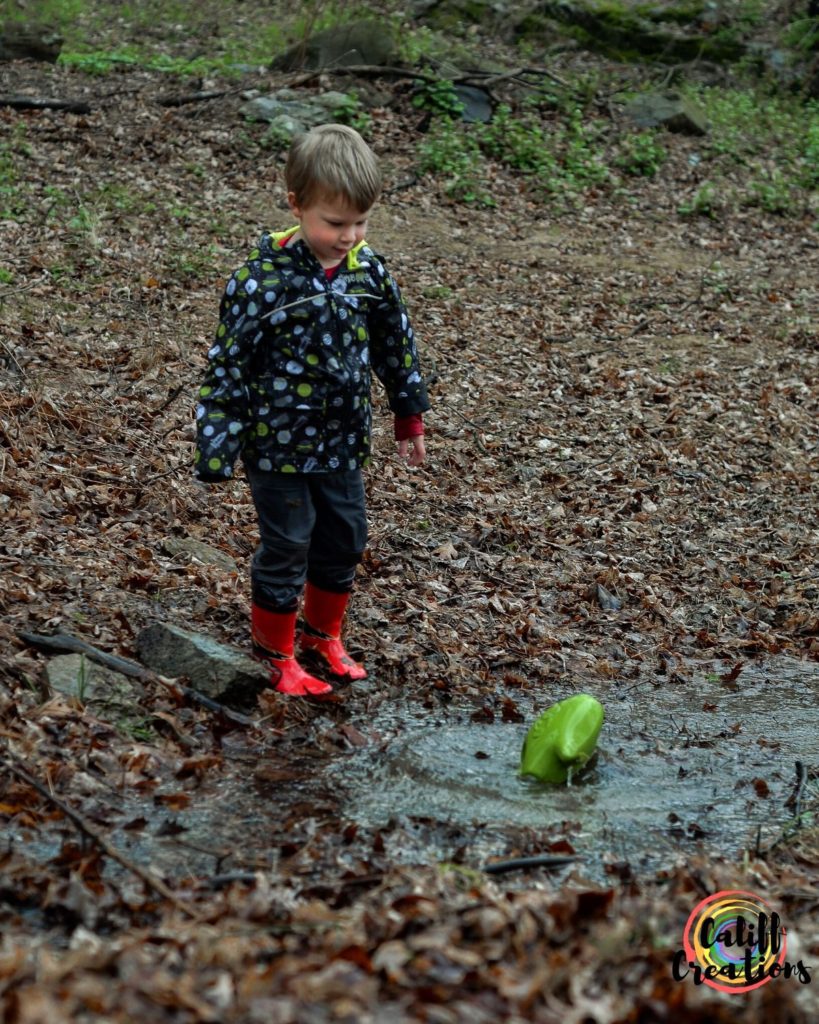
What Effects a Creek’s Current?
Walk along the shoreline and take note of how the creek looks when it is moving fast. Is it more narrow? Shallower? What about the slow-moving eddies? Did the creek widen and deepen? As you walk and discuss these kids will learn to make a connection and figure out how these affect the current.
Explore Current Further
This is a fun activity but you do need to be prepared to get wet. Start by finding a part of the creek that is moving well, but not too fast, and is relatively shallow. Walking into the middle, watch how the water moves around your legs and encourage kids to play with the current by sticking their hands in. Then, start building an island in the middle of the creek. Maybe you bring rocks from the shore and build it up until it breaks the surface. Then step back and watch what happens to the current.
BONUS: If you can, try throwing some dry sand or dirt upstream so that you can watch how it moves around the island and get a great visual of the effects on the current.
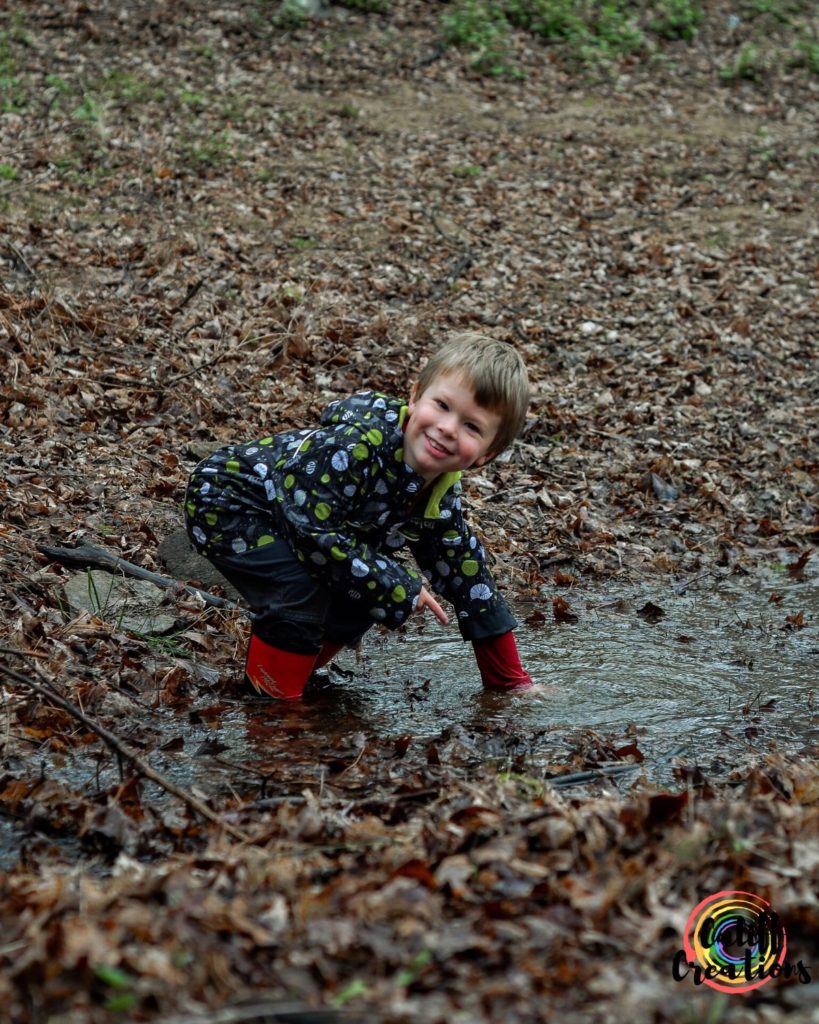
Let’s Race
Once you have a basic understanding of current, why not have a race? If you have already explored what sinks and what floats, then you can have a boat race! Use leaves and sticks for an impromptu race. If you plan to return, try making little boats at home out of popsicle sticks or whatever recycled materials you find at home. Then race them next time you visit the creek! (just make sure you bring it back home)
The Life in the Creek
I mentioned how creeks are teeming with life. Simply watching them move around can be fascinating. I remember watching little water bugs dance across the calmer parts of the creek I played at as a kid. We spent hours turning over rocks in the creek to find bugs and count how many we found. In an amazing moment, I was able to share that same creek with my kids.
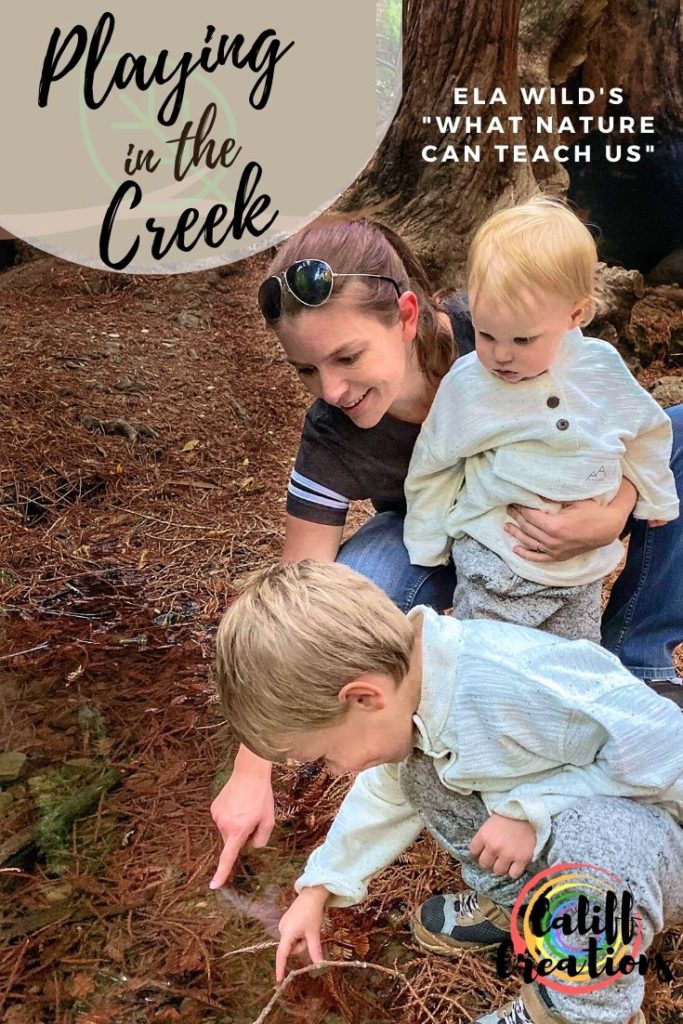
Catch and Release
Creeks are home to many animals and small fish. Depending on where you live there might be frogs, salamanders, crawfish, or small fish. Catching (and releasing) these critters is a fun learning opportunity for kids. They learn about the animal and they also learn hand-eye coordination, kindness, and how to be gentle. They learn to observe and be patient. Plus, it is so fun to watch them running around chasing frogs!
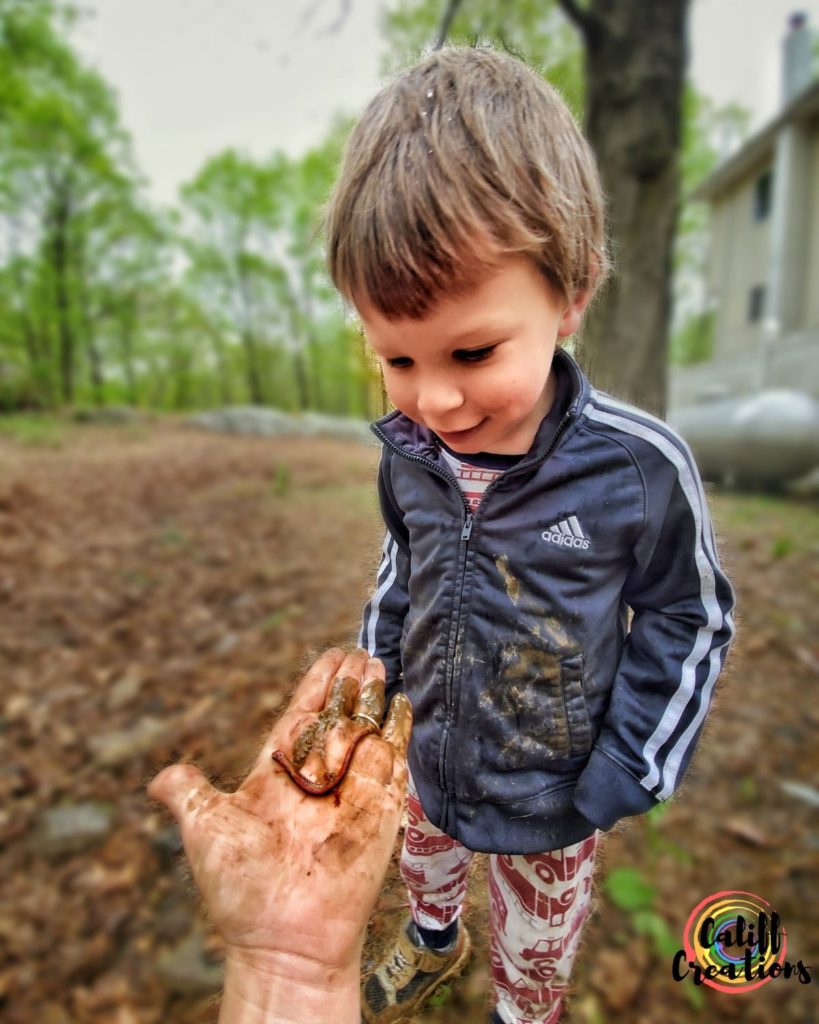
Micro-Life in the Creek
People in my home town wouldn’t be surprised to see me as a kid running around with a microscope. I dragged my mom around to different creeks around town so I could look at what lived in the mud. Observing micro-life is like peering into a different world and can open up a child’s mind in remarkable ways. Try looking at mud from different parts of the same creek or compare different creeks to sharpen observational skills.
A microscope would be best but a magnifying glass will do the trick as well. Or go for the whole kit and really study the life in the creek!
Life Lessons from a Creek
Once all the play is done and you think you’ve learned all you can from a creek, sit back and just watch it. Have you seen the Disney movie, Pocahontas? “You can’t step in the same river twice.” The water is always moving, renewing itself. It shows us that nothing ever truly stays the same. Sometimes the change is quick like with the flow of the water, other times it is slow like the erosion on the shoreline. Change is always happening around us and watching the creek can teach us to embrace it in our own lives instead of fearing it, learning to have fun and live in the moment.
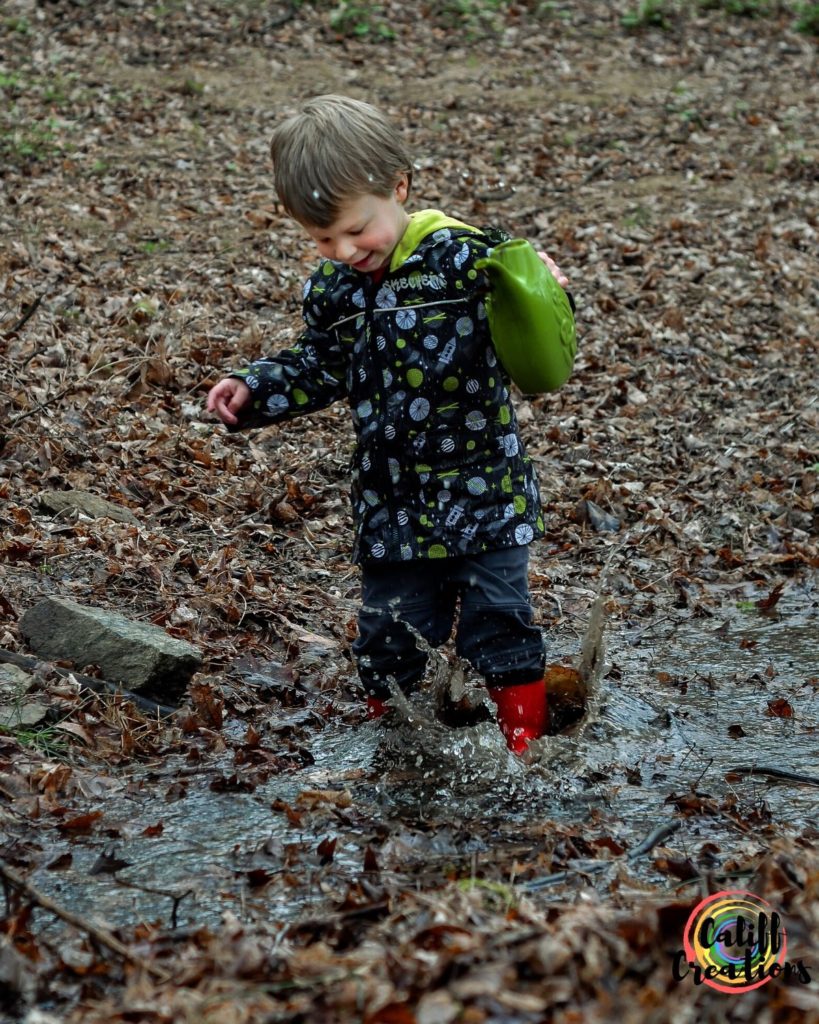
One Last Dance with the Creek
As you ponder this interconnection based on water, maybe you can come up with a story about the water in the creek in front of you, encouraging kids to help come up with it. The water in the creek might be from snowmelt up high on a mountain or heavy rainfall a few miles away. Tell a story about how that water goes on a journey that takes it from the creek to the ocean and around the world. It has spent time in the clouds and then fell back to Earth as rain, snow, or ice. Maybe it watered a field growing food to feed the hungry. Your story can go anywhere and shows kids how water is the one thing that connects all life on Earth.
Don’t forget to follow us on Instagram for more of our adventures and use #ElaWildChallenge to share your creek play pictures!
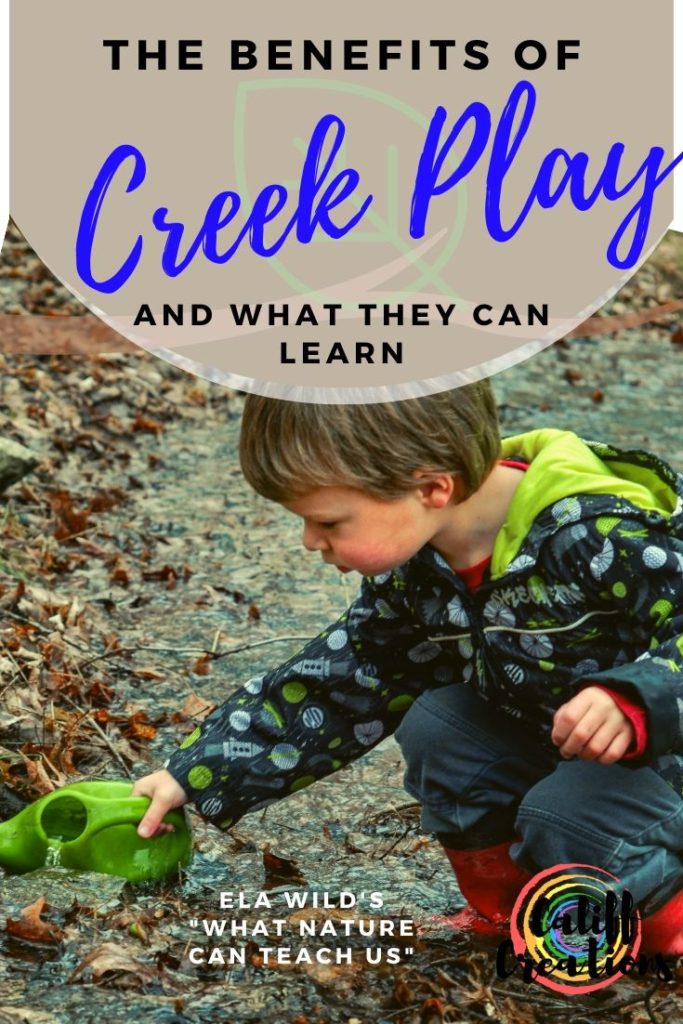



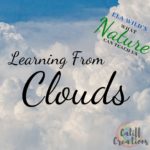



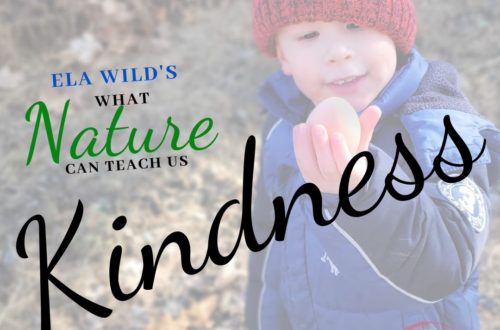
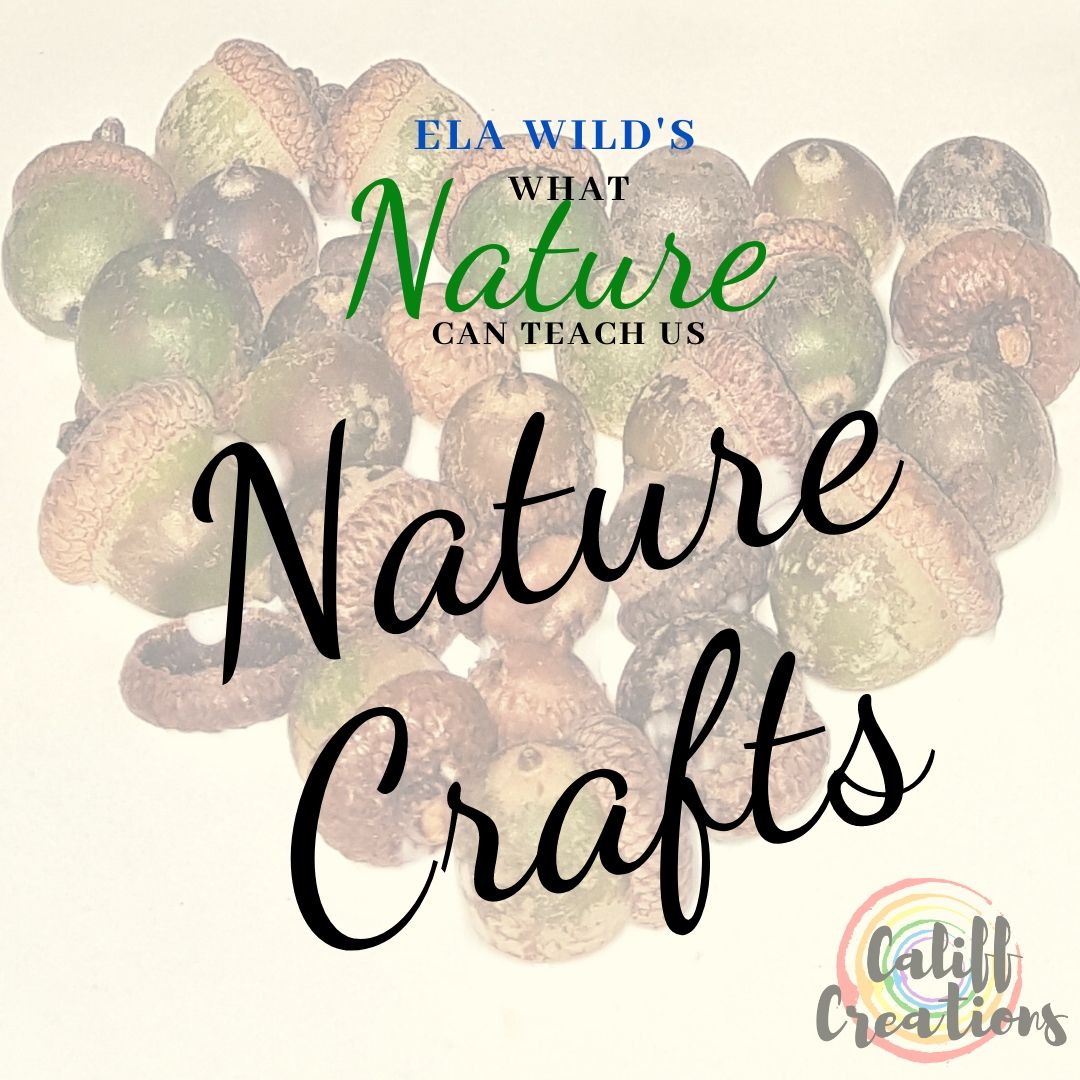



2 Comments
Gale
Ah, catch and release. At least that’s how it usually goes.
We have a fish in a jug which we caught in a creek and it’s been with us for two years now. This was not the original plan.
Kat
what a story! I guess the fish is still doing well though.